


















Eco-towerism in Tsiskarauli: community rehabilitation of a missile-struck tower, 2023 © INTO
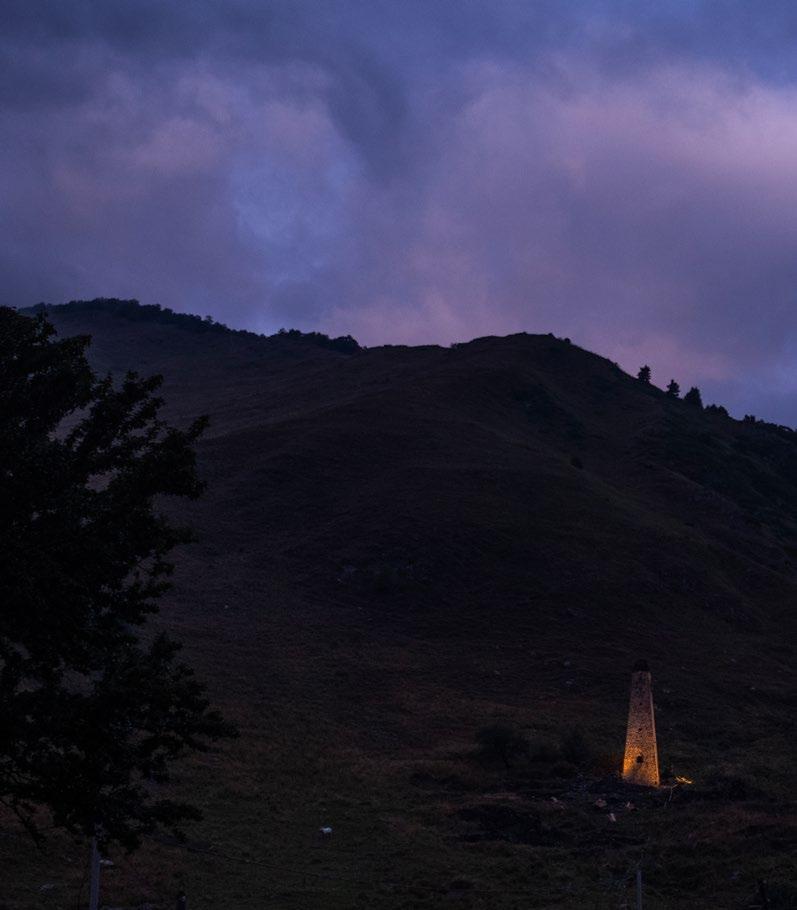
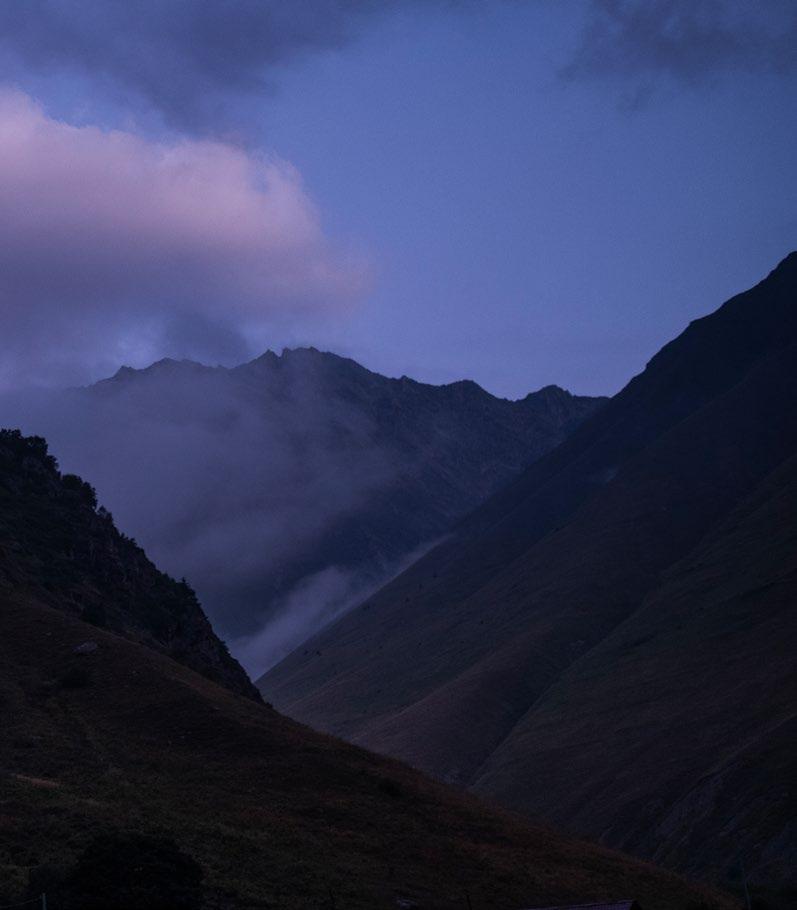
Summer - Fall 2024











Cultural heritage, in all its diversity, not only represents the intellectual wealth of a nation that its people would take pride in, but also acts as an important vehicle for exchange and mutual learning among civilizations. In today’s world, cultural heritage is facing threats both from nature and human activities, and it is increasingly becoming endangered by regional conflicts. It has thus become a common understanding that the world must strengthen international cooperation in heritage protection.
China—a country rich in cultural heritage—was among the first to respond to the initiative to found the International alliance for the protection of heritage in conflict areas (ALIPH). By playing active roles in this international organization as a founding member state, China has taken concrete action to safeguard humanity’s cultural heritage. As part of this initiative, the National Museum of China (NMC) has long been engaged in the work of the ALIPH Scientific Committee, sharing its own expertise on heritage protection. The Museum also serves as one of the world’s three international safe havens that afford shelter to heritage in danger, with the other two being the Musée du Louvre Lens in France and the Schweizerisches National Museum.
This exhibition Salvaged from the Shadows, Protecting Cultural Heritage is jointly presented by the NMC and ALIPH. Projects supported by ALIPH have been selected and narrated in five sections: “A Threatened heritage,” “ALIPH, action at the service of heritage,” “Prevention and healing,” “The women and men behind cultural heritage,” and “Preserving the beauty of the world.” For the first time, a panoramic view has been given to cultural heritage in conflict areas and the achievements made to protect it. The exhibition resonates with heritage workers’ firm commitment to safeguarding the shared spiritual homeland of humanity and conveys their best wishes for rebuilding peace.
Let’s embark on an exceptional journey of heritage protection and pray for the salvation of cultural heritage in new light.
Gao Zheng Director of the National Museum of China
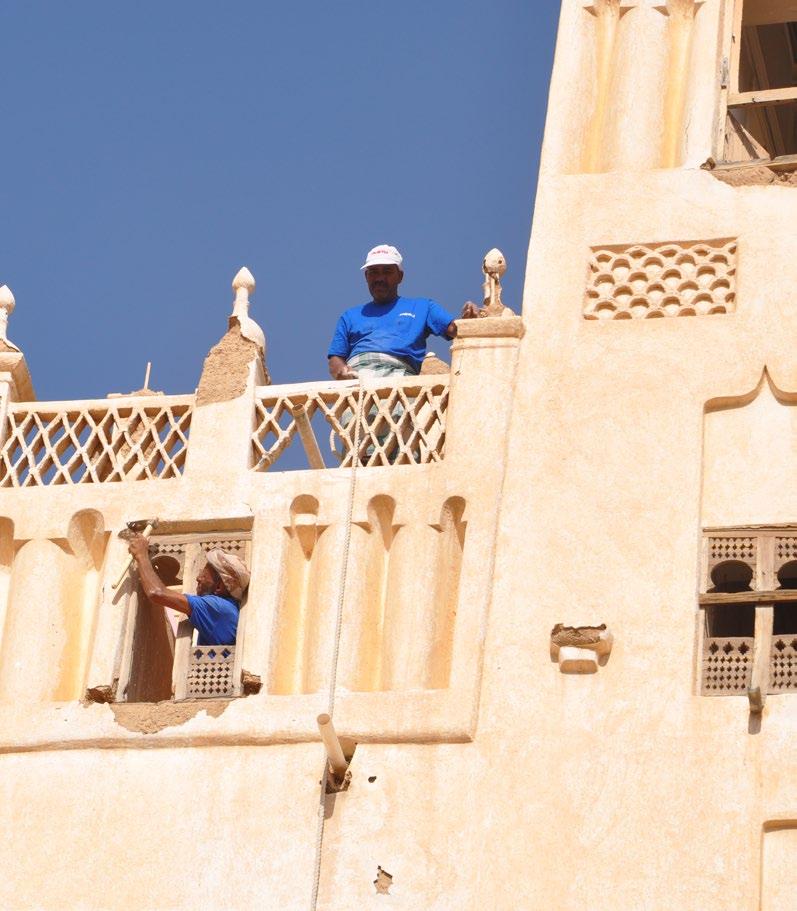

Since ALIPH’s creation in 2017, we have had a single obsession: to take action! Sometimes this means taking action during extreme emergencies; sometimes it means protecting cultural heritage wherever it might be threatened by conflicts. Everywhere, that is, where it is possible for us to take action with a concrete response.
We have risen to this challenge hand in hand with local authorities, communities, and an ensemble of heritage professionals. To this end, ALIPH has supported 450 projects in 35 countries. To all those actors working on the ground: thank you. It is for you, for sustainable development, and for peacebuilding that we act.
Today’s exhibition bears witness to this collective effort and to the tangible results we have all achieved. It also shows that protecting our cultural heritage remains an issue that is, alas, in front of us. Each one of us must be aware of this challenge and strive to preserve this shared treasure, this marker of our common humanity.
I would like to express my deep gratitude to the National Museum of China for its partnership and warm welcome!
Have a good visit!
Bariza Khiari Chair of the Foundation Board of ALIPH
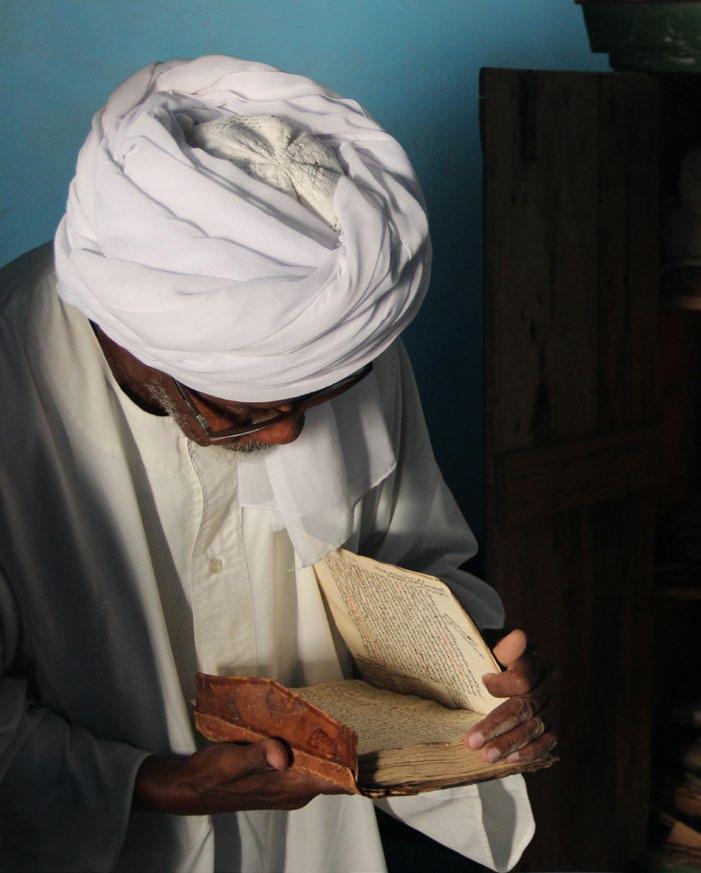

Around the world, cultural heritage - millenia-old constructions or traditional know-how - is endangered. During conflicts or crises, ancient sites can be destroyed in an instant.
Such destruction impacts local communities and humanity as a whole. This heritage, the product of and witness to our history and our identities, is essential to each and every one of us. It is the thread that binds us; the roots we need to foster a shared future.
However, at the very heart of these crises, there are women and men risking their lives to protect the sometimes tenuous remnants of their past. By preserving their cultural heritage, they are helping to protect the very thing that holds their community together, and which anchors them in their land. Their commitment is a vehicle for dialogue between cultures and religions, sustainable development, and peacebuilding.
It is these actors, the heritage they protect, and the values they defend, that the International alliance for the protection of heritage in conflict areas (ALIPH) has supported and accompanied since its creation in 2017 in Geneva (Switzerland).
This exhibition features a selection of projects that ALIPH has supported to illustrate not just the violence behind the destruction but also the importance of cultural heritage and the will and courage of those who protect it. The exhibition is also an opportunity to marvel at the beauty of the world.

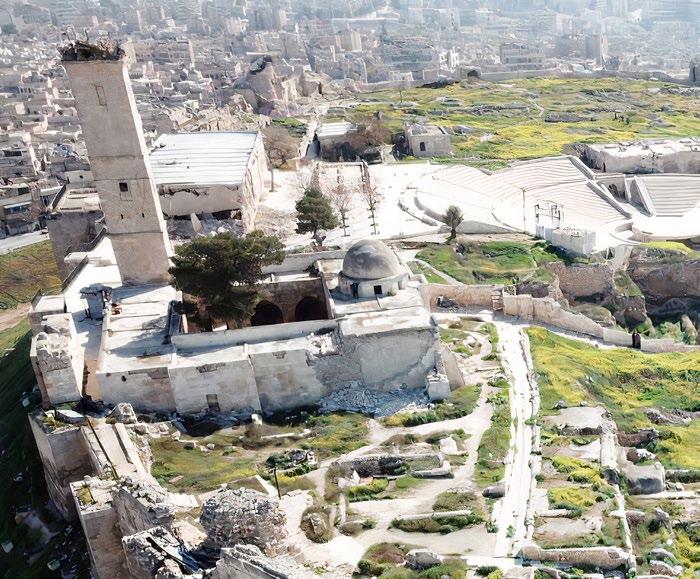
Today, cultural heritage is either damaged or under threat by uncontrolled urban growth; the consequences of climate change (floods, desertification, and so on); or, as has frequently been the case in recent decades, war. During a conflict, cultural heritage might not only become collateral damage but also, increasingly, a target or even a weapon of war.
The deliberate destruction of objects, sculptures, monuments, archaeological sites, or traditional practices often stems from identity-based or ideological motivations. However, the looting of archaeological sites and the trafficking of cultural artifacts

can also be motivated by financial considerations: their illicit trade is a significant source of financing for terrorist activities.
Nevertheless, during times of war, cultural heritage is protected by the 1954 Hague Convention. In 2016, the International Criminal Court labeled the intentional destruction of cultural heritage a war crime. By the mid-2010s, it had become clear that the international community needed to further strengthen its commitment to the protection of endangered cultural heritage.


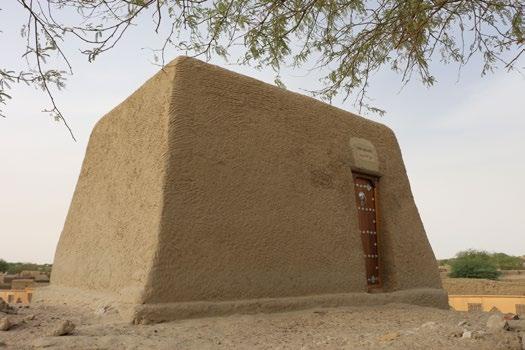
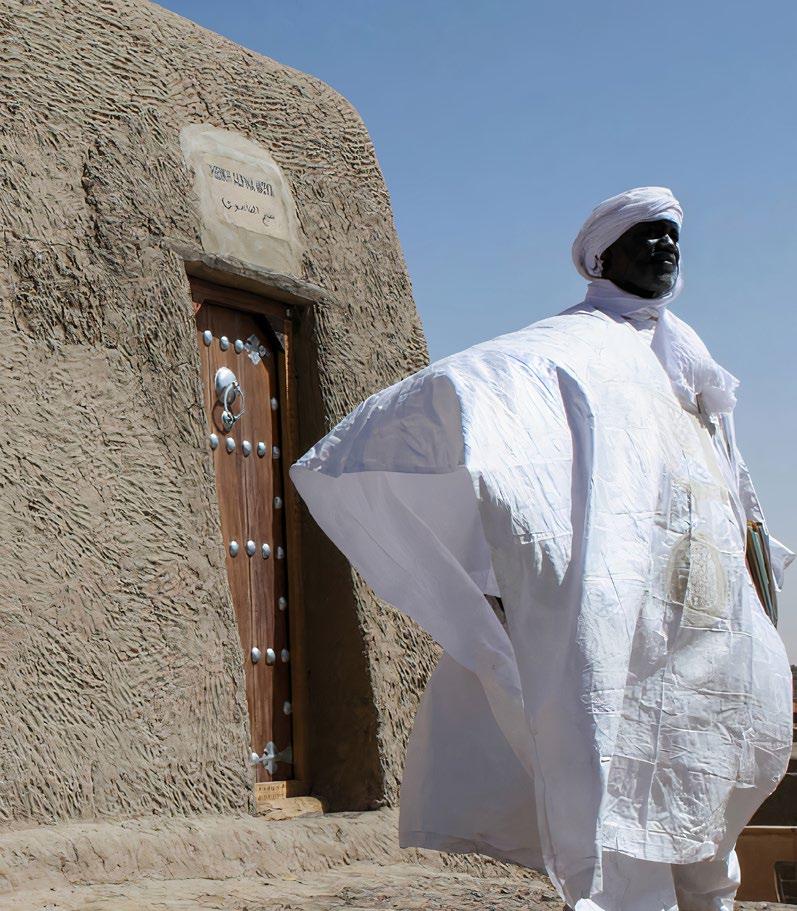

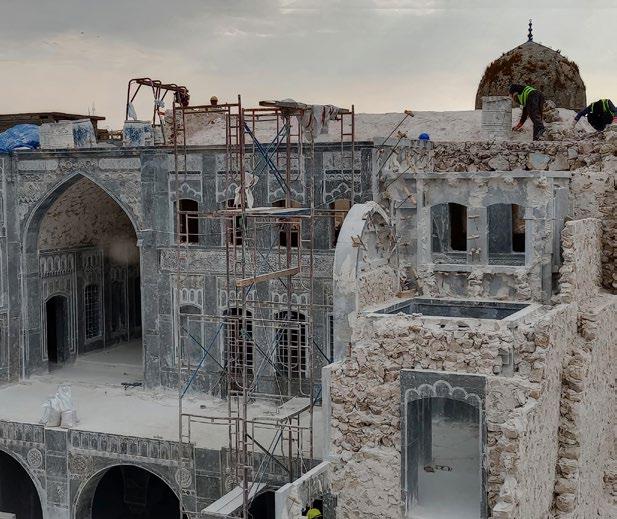






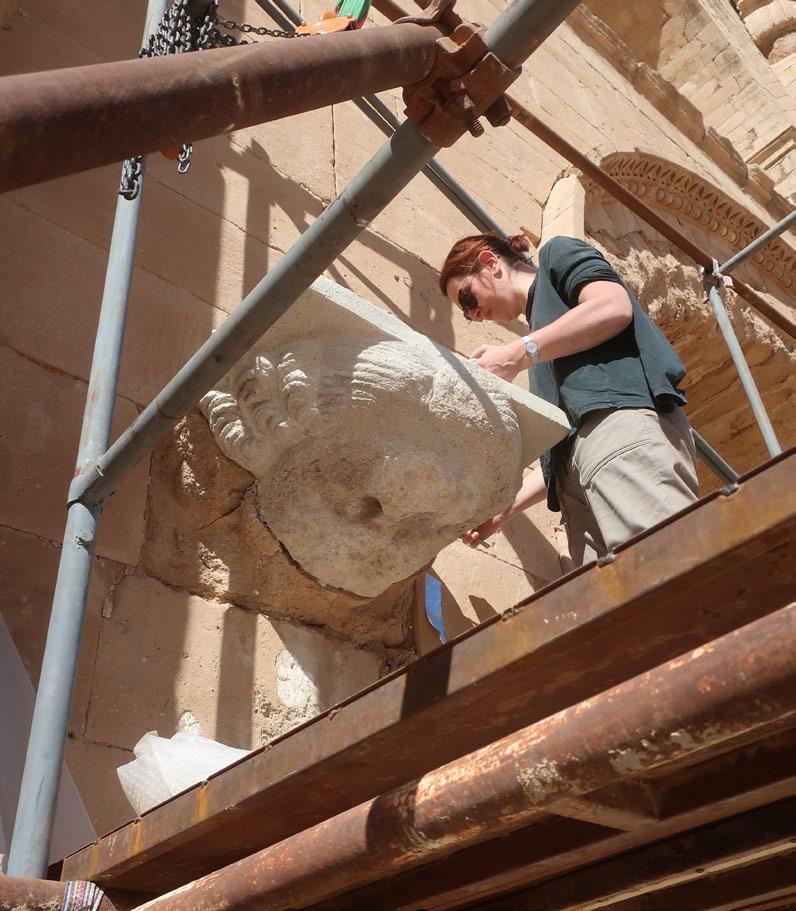
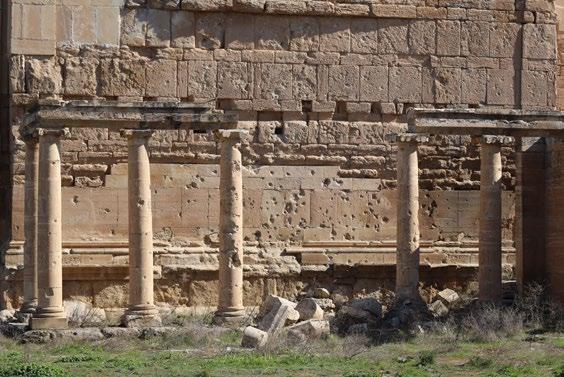
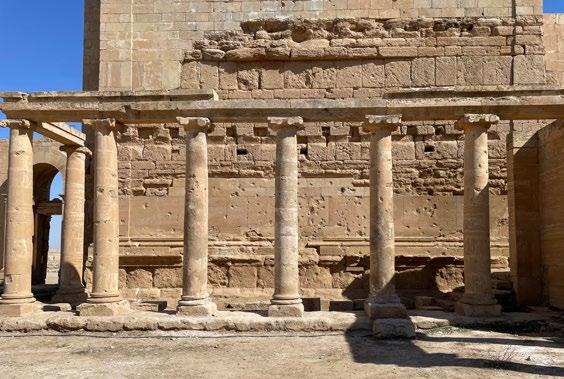

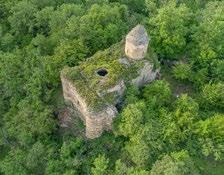

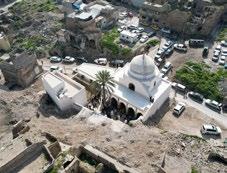
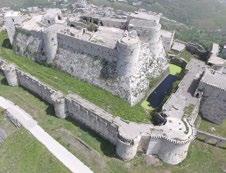
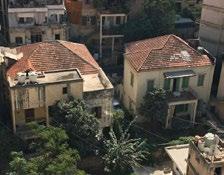
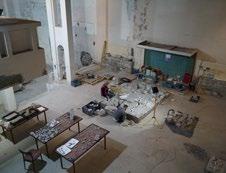

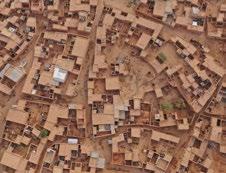

In December 2016, in response to the massive destruction of cultural heritage in the Middle East and the Sahel, France and the United Arab Emirates organized an international conference on the protection of cultural heritage in conflict situations in Abu Dhabi, under the aegis of UNESCO. Among the initiatives launched on this occasion was the creation of a new fund for cultural heritage. Thus, in March 2017, with the support of several states – France, United Arab Emirates, China, Saudi Arabia, Kuwait, Luxembourg, Morocco and, more recently, Cyprus – as well as private donors, the International alliance for the protection of heritage in conflict areas (ALIPH) was founded in Geneva, the capital of humanitarian action. At the same time, several major international museums, including the National Museum of China, offered to act as safe havens for endangered heritage and to shelter works from conflict zones.



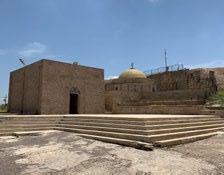
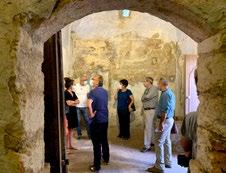

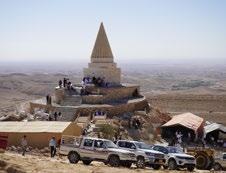


Since then, ALIPH has become the world’s leading organization exclusively dedicated to the protection and rehabilitation of heritage in conflict, post-conflict, or post-crisis areas. In 7 years, it has supported more than 450 heritage protection or rehabilitation projects in over 35 countries on 4 continents. ALIPH finances concrete, on-the-ground initiatives, working hand in hand with the authorities, communities, and local partners. Thanks to its agility, it can intervene rapidly during a conflict or after natural disasters. ALIPH is now also committed to protecting the cultural heritage in vulnerable countries impacted by climate change. Through its work, ALIPH strives to contribute to peacebuilding and sustainable development.

June
December

Organization in Abu Dhabi (United Arab Emirates) of the international conference for the safeguarding of cultural heritage in conflict areas
March

Creation of the International alliance for the protection of heritage in conflict areas (ALIPH) in Geneva (Switzerland)
June

Launch of the first projects supported by ALIPH, including the rehabilitation of the Mosul Museum and the Monastery of Mar Behnam (Iraq)
June 2017: Liberation of Mosul (Iraq)


June 2019: Launch of 14 new projects, including the restoration of two churches, two mosques, and one historic house in Mosul as well as sites in Afghanistan
November
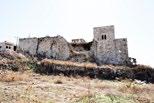
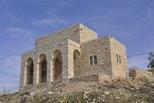
Completion of the rehabilitation of the Ali Salem Mansion, Beitillu (Palestine)
September
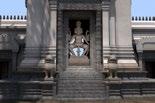
Restoration of the statue of Shiva, Koh Ker (Cambodia)
March

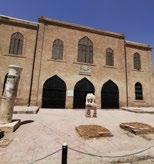
Completion of the rehabilitation of the Museum of Raqqa (Syria)
February

Completion of the restoration of two Yazidi temples (Iraq)
July


Completion of the rehabilitation of the Monastery of Mar Behnam (Iraq)
December

Launch of 20 new projects, including in Yemen and Sudan
March
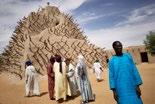
Launch of the rehabilitation of the Tomb of Askia, Gao (Mali)
April
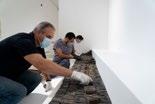
Launch of an ALIPH fund to support cultural heritage sites and workers during COVID-19
January
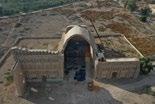
Emergency protection of the Arch of Ctesiphon (Iraq)
October

Launch of 30 new projects, including in Syria, BosniaHerzegovina, Ethiopia, Palestine, and Niger
October
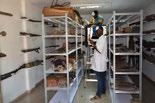
Upgrade of security and storage for collections at the Musée des Civilisations de Côte d’Ivoire, Abidjan
August

ALIPH mobilizes to stabilize and rehabilitate the Old City of Beirut

December

Completion of emergency measures to stabilize and conserve the sculptures in the ancient city of Hatra (Iraq)
December
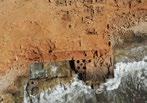
Adoption of 20 new projects, including in the Sahel and Libya
January

ALIPH Second Donors’ Conference at the Louvre Museum, Paris (France)
February

ALIPH’s Action Plan for Cultural Heritage Protection in Ukraine
February 2022: Crisis in Ukraine
March


Inauguration of the Tutunji House and Al-Masfi Mosque, Mosul (Iraq)
December

Emergency restoration of the Crac des Chevaliers (Syria), following the earthquake in Syria and Turkey
December
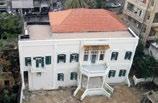
Completion of the restoration of the Al Makassed Villa in Beirut (Lebanon)
March

Re-opening of the Oriental Library of Université Saint-Joseph in Beirut (Lebanon)
April
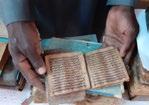
Conservation of manuscripts at the Djenné Library (Mali)
November
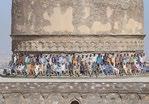
Completion of the work to preserve a stupa in Shewaki, Afghanistan
February


Launch of the conservation of the Tuzla Mosque and St. George of the Latins Church (Cyprus)
December
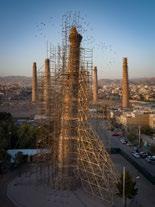
Emergency stabilization of a citadel, a mausoleum, a minaret, the Great Mosque, and a sanctuary in Herat, following the earthquake in Afghanistan
November

Approval by ALIPH of its first project to protect cultural heritage endangered by climate change: emergency measures at the Musée de la Mer, Gorée (Senegal)
October 2023: Conflict in Gaza
October 2023: Earthquake in Afghanistan
September 2023: Flooding in Libya
May

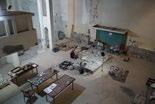
Launch of the restoration of the building of the Mosul Museum (Iraq)
March

First ALIPH Forum in Abu Dhabi (United Arab Emirates)
May 2023: Conflict in Sudan
February 2023: Earthquake in Syria and Turkey

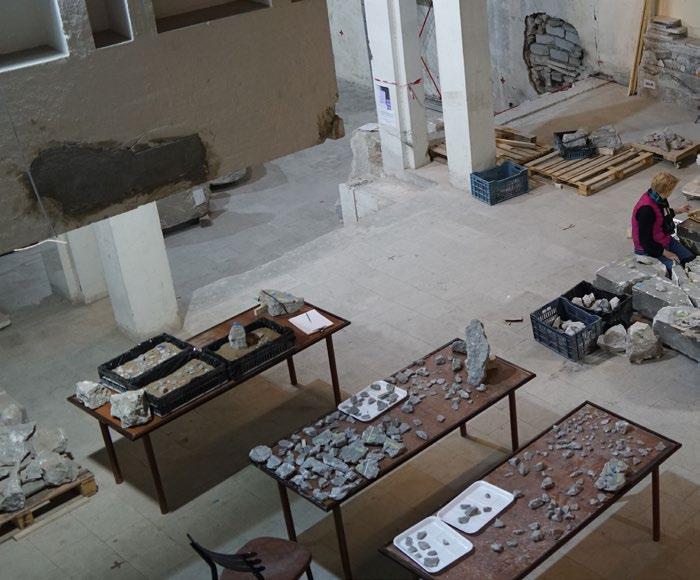
Protecting all forms of cultural heritage—historical monuments, works of art, or traditional practices—relies on a variety of techniques.
When cultural heritage is faced with any form of threat, it is essential to implement preventive measures: monuments and sites must be documented, collections inventoried and kept secure, intangible heritage chronicled, and personnel trained, particularly when emergency interventions are called for.
In times of crisis, the most urgent needs must be prioritized: sandbags positioned to protect sculptures, museum collections evacuated to shelters, monuments consolidated, and structural support ensured. These are all forms of targeted

temporary emergency measures that can be adapted to the means available on the ground.
After a crisis, more extensive, long-term programs can be carried out. Rehabilitating monuments takes several years of work and relies on different trades, depending on whether the structures are made of stone, earth, or wood. Restoring objects is a meticulous task, sometimes requiring that hundreds of fragments of glass, stone, or ceramic be assembled like a jigsaw puzzle. At the same time, the need for this work is an opportunity to transfer many skills and know-how to community members, especially the youth, ensuring the sustainable protection of this cultural heritage.

Protecting and rehabilitating built heritage require a wide range of skilled workers (heritage architects and engineers, masons, carpenters, blacksmiths, etc.). Each of them develops specialized know-how that they adapt not only to the type of architecture (stone, earth, wood…) but also to the context, such as emergency stabilization of historical houses in Beirut after the explosion of August 2020 (Lebanon), the rehabilitation of buildings in Shibam (Yemen), or the restoration of entire neighborhoods in Agadez (Niger).


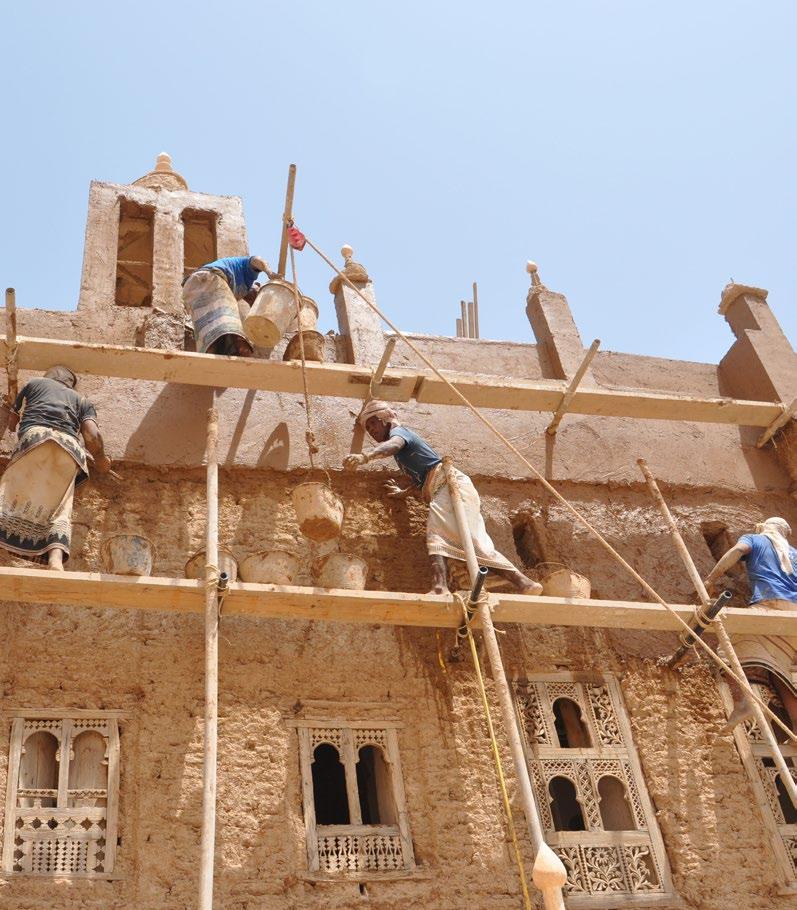

The practice of building structures made of earth is found around the world. Each region has its own construction techniques rooted in local traditions, as is the case for adobe (banco) in Niger or mud in Yemen. These practices rely on techniques, materials, and tools passed down through generations.

The examples presented in the exhibition illustrate the diverse and masterful skills that are applied to protecting earthen structures. To restore the mosque and houses in the Old City of Agadez (Niger), for instance, local raw materials—clay, plant fibers, and water— are molded into aligned bricks and covered with plaster. This plastering must be regularly maintained by the local community.




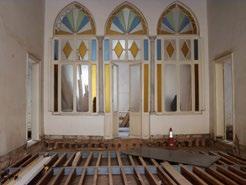


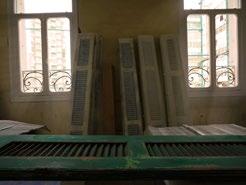
In Beirut, the early 19th-century Al Makassed Villa is a cut-stone building adorned with gypsum sculpture, stained glass, tiles, and painted cement. The Villa’s architectural style and the variety of its decorative features illustrate the range of skills required to restore a single monument and that the work to conserve it can provide many opportunities for employment, training, and skills transfer.
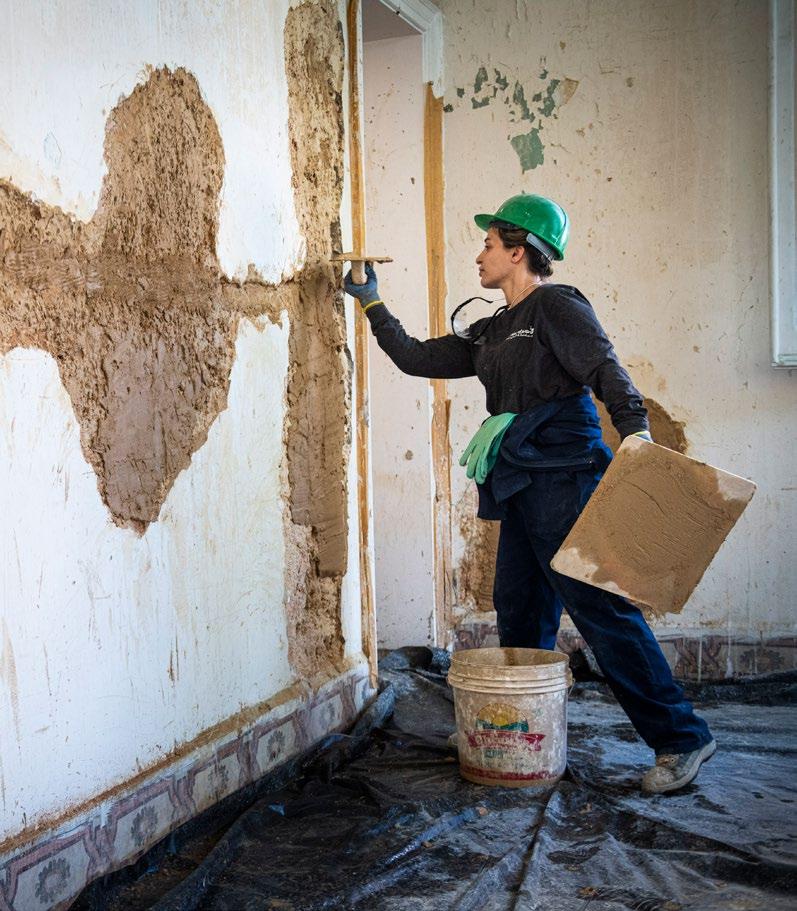

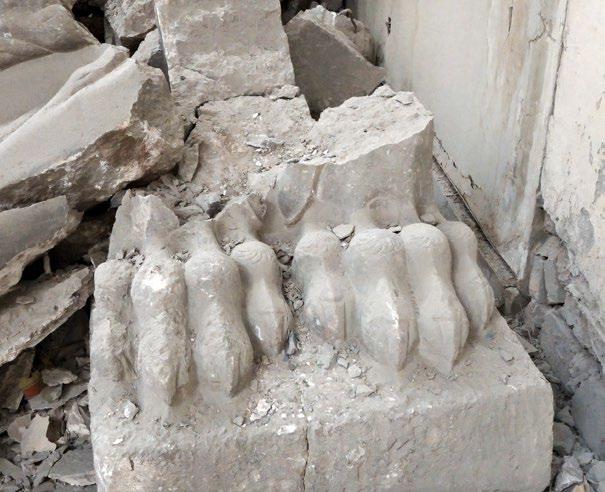
There are two challenges to conserving and restoring artifacts: to preserve the objects themselves and to protect the integrity of the collection they belong to (generally a museum’s collection). Diverse practices have been developed to meet these challenges.
The work to conserve/restore the manuscripts at the Sankoré Mosque in Timbuktu (Mali) was based on an assessment of their state of preservation and a precise understanding of the materials they were made of (paper, the skins of goats, sheep, or gazelles), the inks that were used, and the conditions under which they were stored. When this was done, some manuscripts were cleaned page by page and tears were repaired using special glue and Japanese paper.
In Lebanon, at the Archaeological Museum of the American University of Beirut, the blast in August 2020 shattered a display cabinet and the 74 antique glass objects it

held. To save this collection, the restoration team consulted preexisting photographs and sketches of the objects to sort the hundreds of glass fragments by size, material, and color, before reconstructing the artifacts piece by piece, like a colossal puzzle.
The restoration of the giant lamassu sculptures (winged and androcephalous lion gods, protectors of Assyrian palaces) in the Assyrian Hall of the Mosul Museum (Iraq) represents an entirely other challenge. The two sculptures were destroyed by powerful explosives in February 2015, and their fragments were later found strewn across the floor of the Hall. As part of the museum’s major rehabilitation program, Iraqi and French archaeologists have been measuring, documenting, and classifying each fragment in order to rebuild the original statues as well as possible.

Manuscripts from the Djenné Library
Many cities in Mali such as Djenné and Timbuktu are home to exceptional collections of historical private manuscripts consisting of Islamic orthodox treatises, poems, and incantations. It became urgent to inventory, restore, store, and digitize these records of the intellectual, spiritual, and scriptural activities.
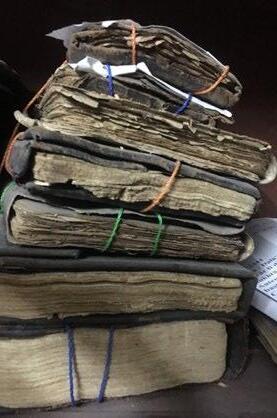

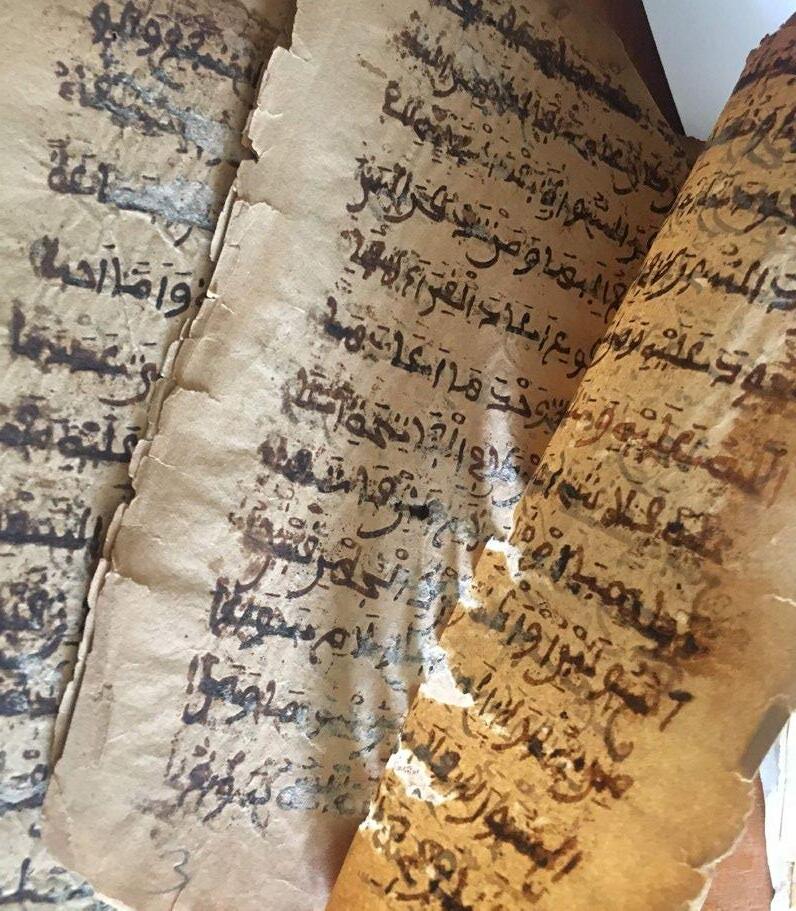



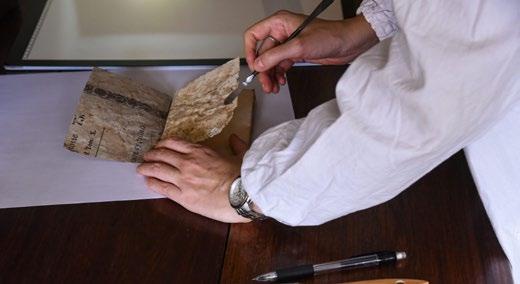
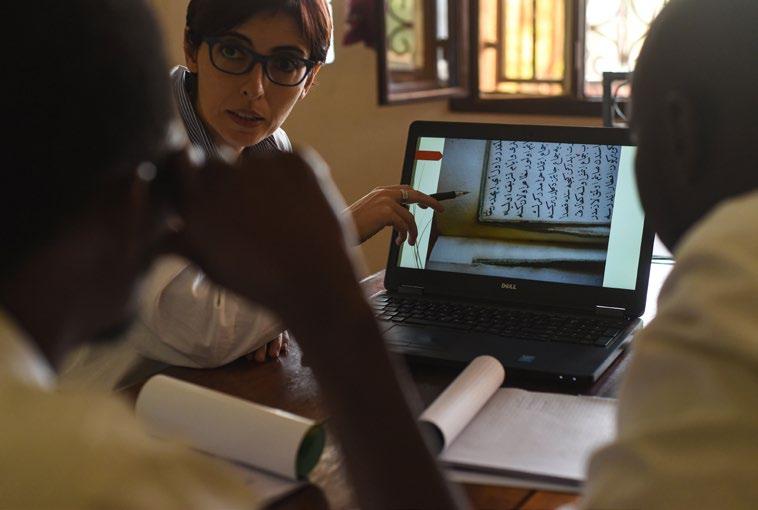

Museum workers sorting glass fragments in the aftermath
At the Archaeological Museum of the American University of Beirut (Lebanon), 74 iridescent glass artifacts dating from the Roman, Byzantine, and Islamic periods were shattered during the blast that occurred at the city’s port in August 2020. Once the fragments were sorted by shape and color, a team of restorers set to work to piece them together again, like a jigsaw puzzle.
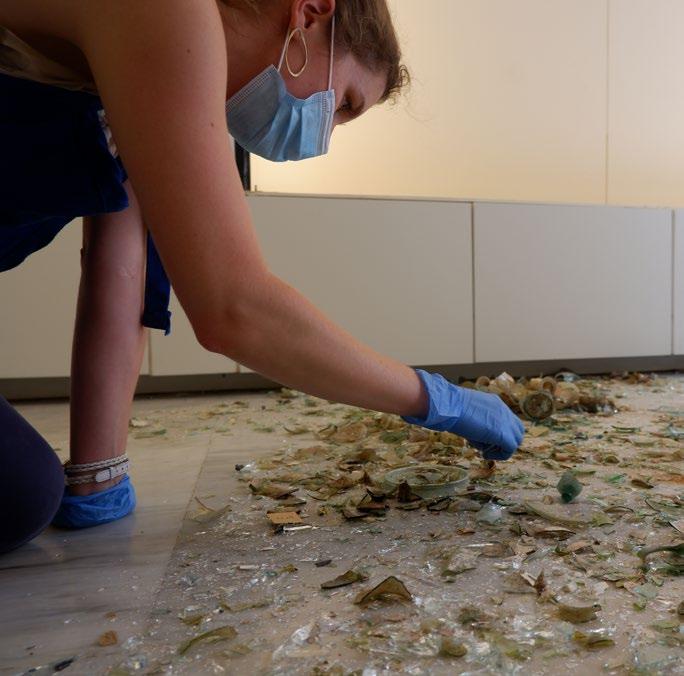

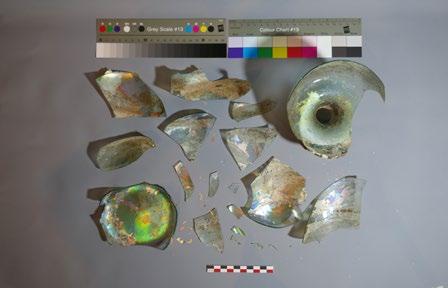
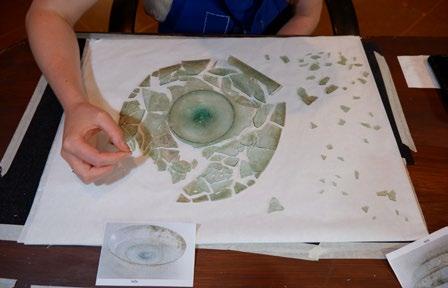
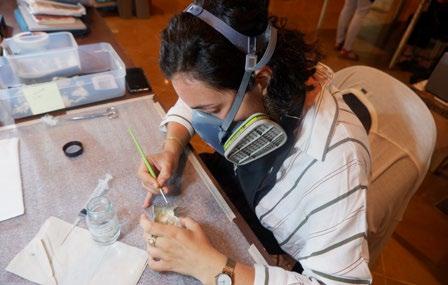

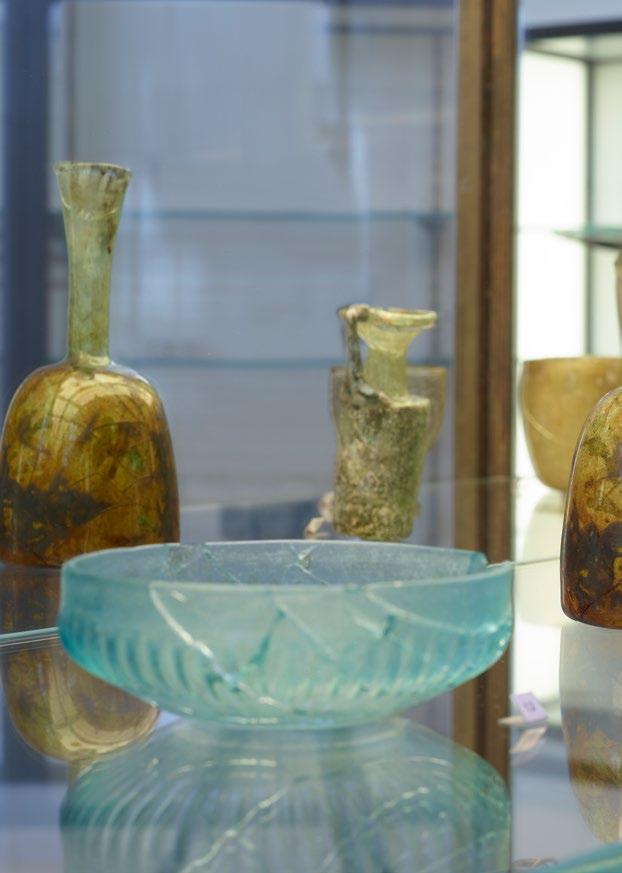


The Mosul Museum is the second most important museum in Iraq after Baghdad, and it housed important collections from the Assyrian, Hellenistic, and Islamic periods. In 2018, one of ALIPH’s very first approved projects was the large-scale rehabilitation of the museum building and its collections. The museum is planned to re-open in 2026.
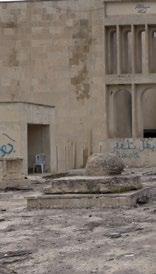
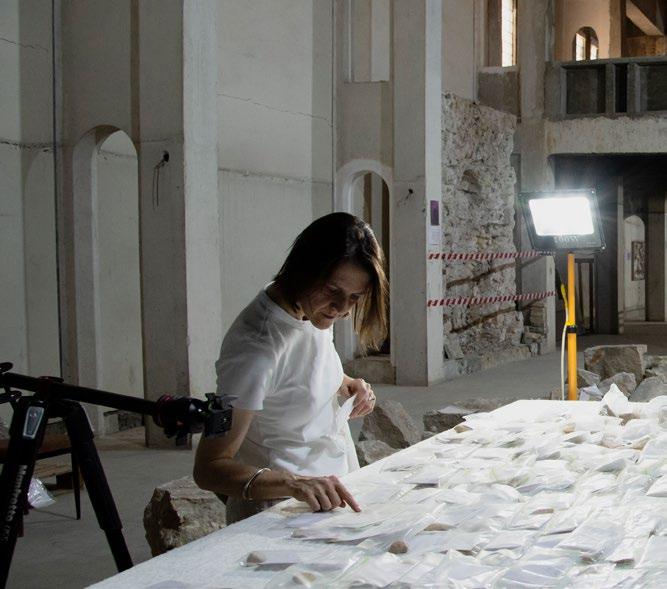

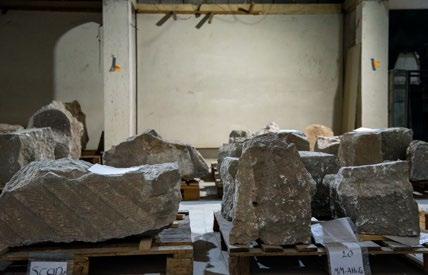



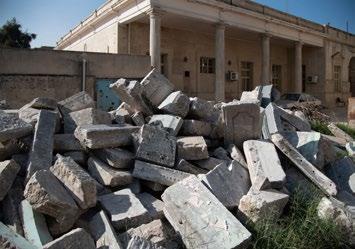

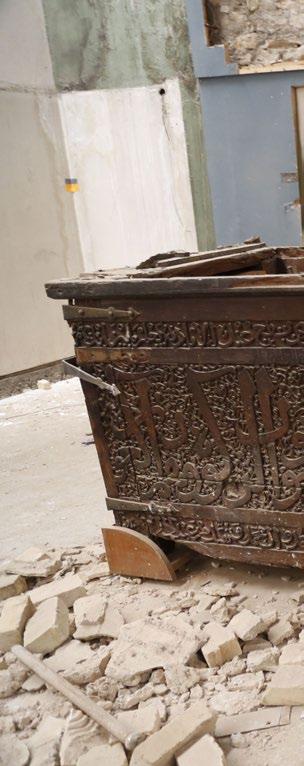
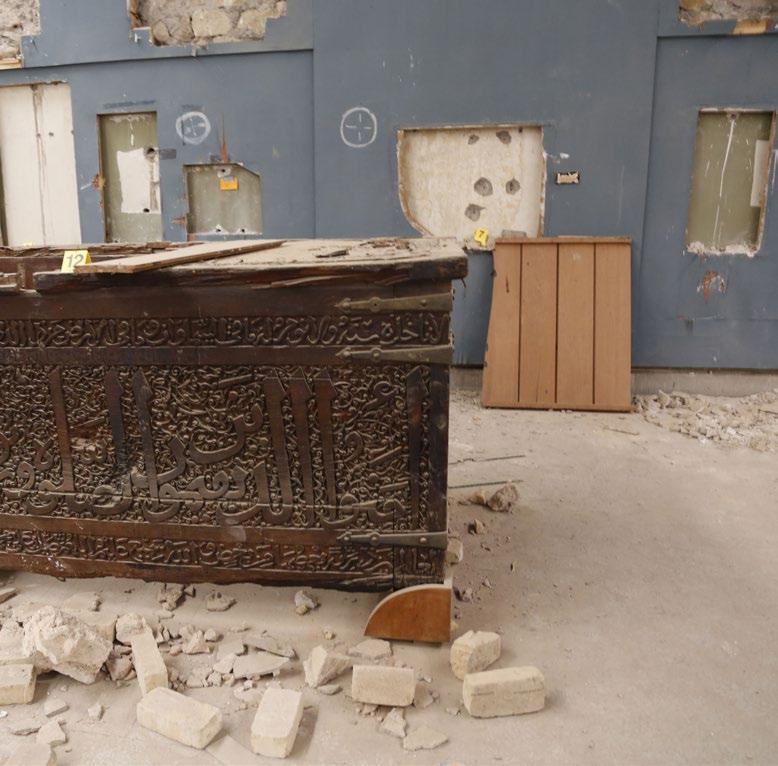

The protection of intangible heritage – oral traditions, social practices, crafts, etc. – is a field in its own right, sometimes neglected, but essential for preserving our history and cultural diversity. Skills and traditions, which are often threatened by conflict or crisis, are safeguarded above all by documenting practices and ensuring that they are passed on to future generations.
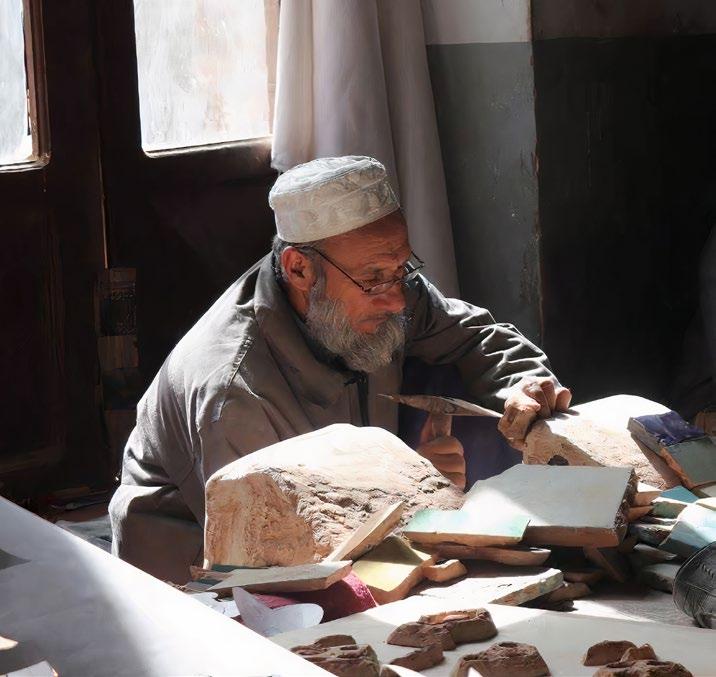
Programs that conserve intangible heritage practices rely upon forms of documentation that best preserve the tradition, for instance, through photos, videos, or interviews with specialists or practitioners.



In Afghanistan, to record the tradition of textile weaving in Surkhdar and glazed tile and mosaic making in Herat, their full production processes were filmed, the raw materials and tools used were documented, and all those involved in the work were interviewed on camera. The aim of this process was to identify and record as many parameters as possible – be they material, technical, or human resources –necessary for the preservation and survival of a practice.
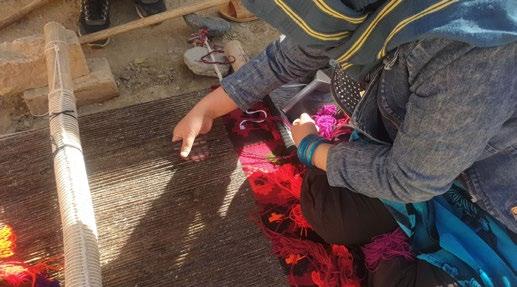
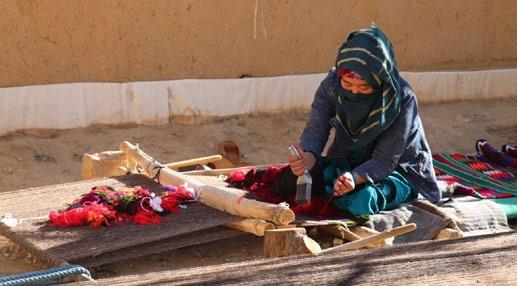
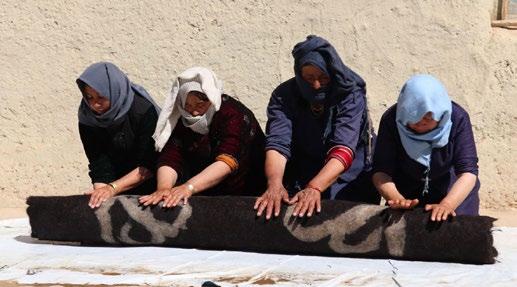

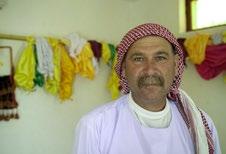



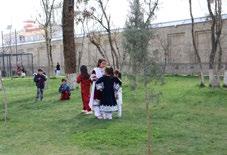
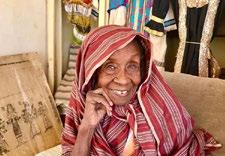


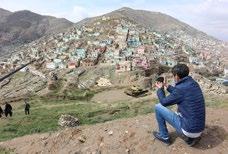

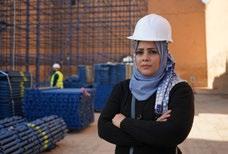
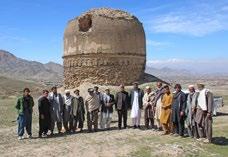
Cultural heritage is above all a story about women and men. Through methods exemplified across diverse projects and much effort, communities who live near heritage sites or who make a living from them are able to benefit from their proximity in myriad ways. In exchange, these communities ensure their lasting protection.
This section is dedicated to all those who are the stewards of this cultural heritage: they are the first victims when it is destroyed, and often, the first to protect it. Over and over, their experience and dedication demonstrate the value that each of them places on cultural heritage and on the importance of ALIPH’s mission.
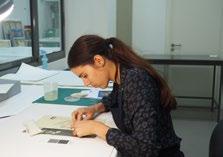







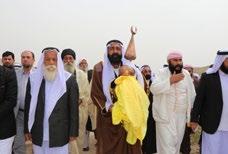
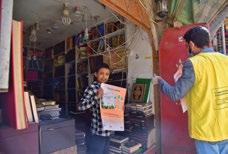


These portraits also reveal that in conflict or crisis areas, with every monument that is rehabilitated or every work that is restored, larger goals are also realized: sustainable economic and social development; education, training, and employment; dialogue between communities in all their cultural or religious diversity; reconciliation and peacebuilding. From Afghanistan to Yemen, from Iraq to Palestine, these witnesses or “heritage heroes,” show us the impact that these projects have on these people’s lives and their communities. With a look or a smile, they reaffirm for us what Dostoyevsky wrote, “that beauty will save the world.”

Cultural heritage is part of the natural and human landscape that often enhances it. And the material of which it is made – be it brick, earth, marble, or straw –further connects the heritage to its environment. Consider the volcanic tuff of Armenian churches and monasteries, the clay and straw banco of the houses of Agadez, or the terracotta bricks of the Arch of Ctesiphon. Each monument is not only an assemblage of materials and skills, but also a set of scientific and technical data, all essential for its protection or restoration.
When documenting cultural heritage, the goal is to organize data that has been collected using a range of techniques, including 3D modeling. By combining information acquired from drones, lasers, cameras, and sometimes satellite images, volume and details can be recorded precisely, capturing the topography of an archaeological site down to the millimeter-long cracks on a glazed brick.
The scanned 3D models presented here are the result of documentation missions funded by ALIPH. They reflect an approach that is both scientific and esthetic, enabling everyone to experience distant sites.






3D scans of the archaeological site of Palmyra, Syria (2nd century CE)
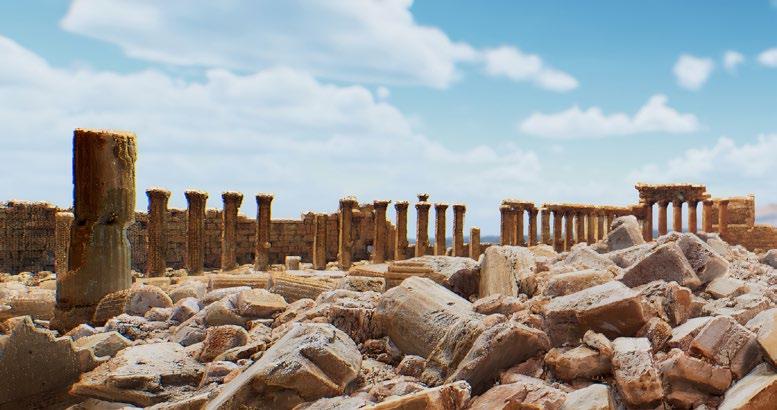


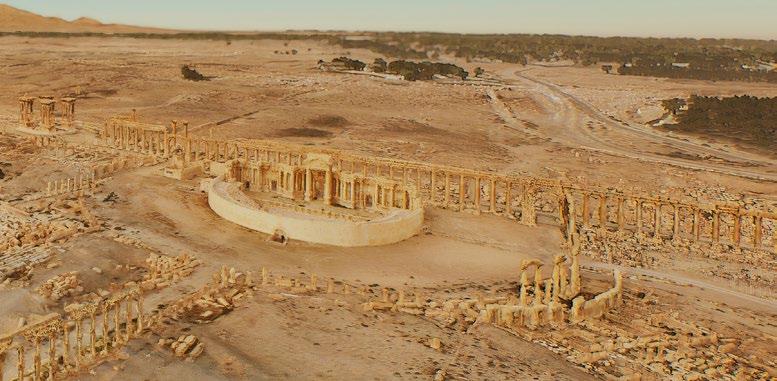

3D scans of the monuments of Yemen (9th-17th centuries CE)
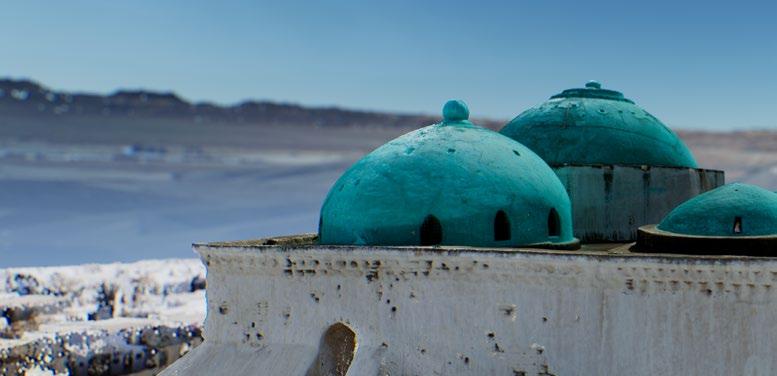


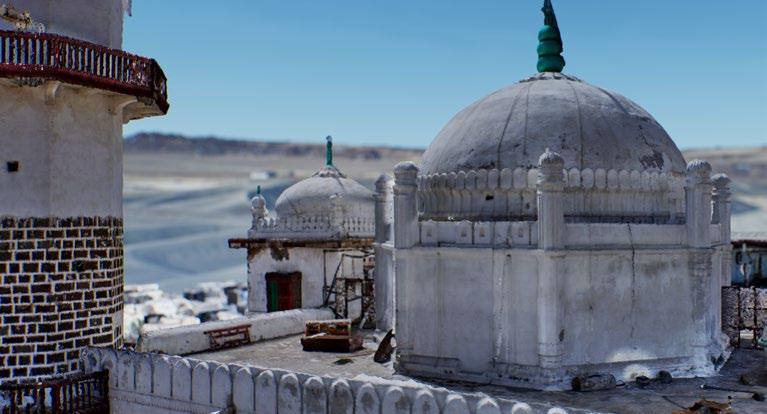

3D scans of the churches, castles, and monasteries of Armenia (7th-8th centuries
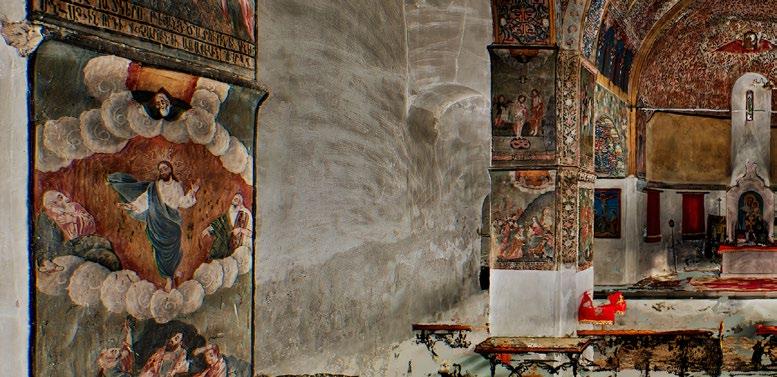
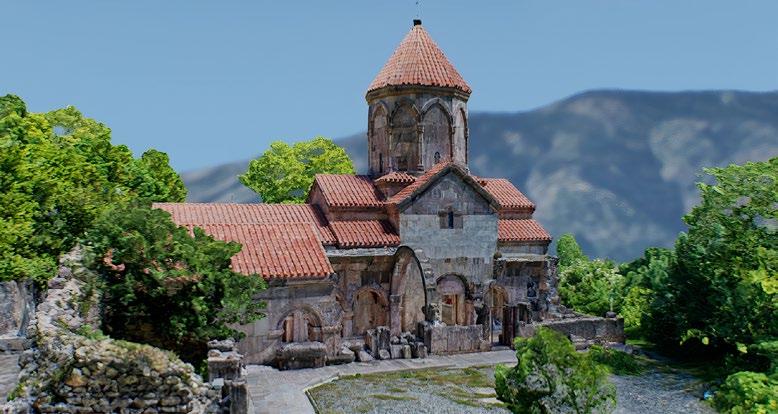
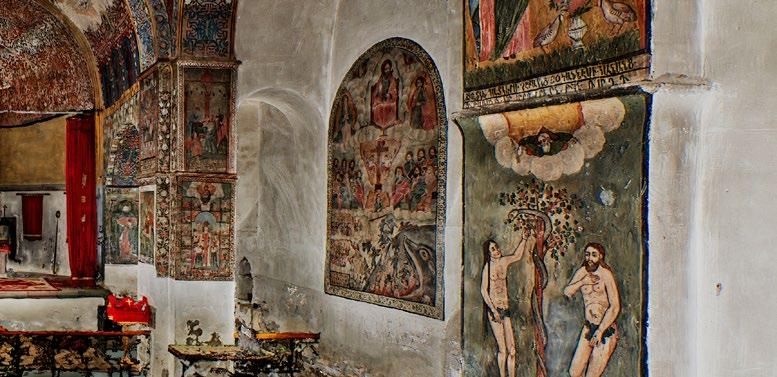
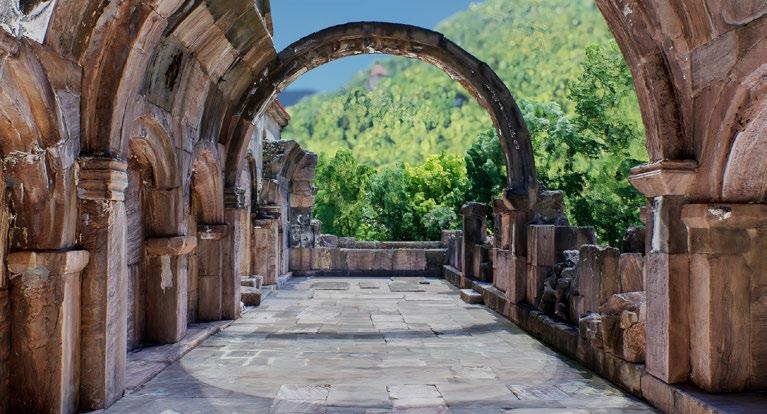


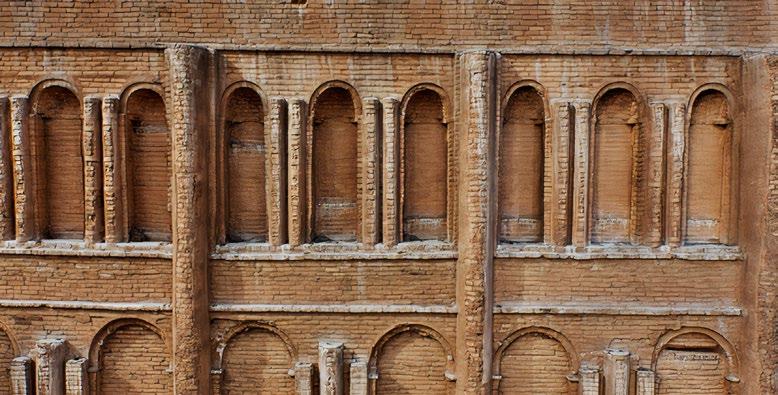



3D scans of the mosque and traditional houses of Agadez, Niger (16th-19th centuries CE)
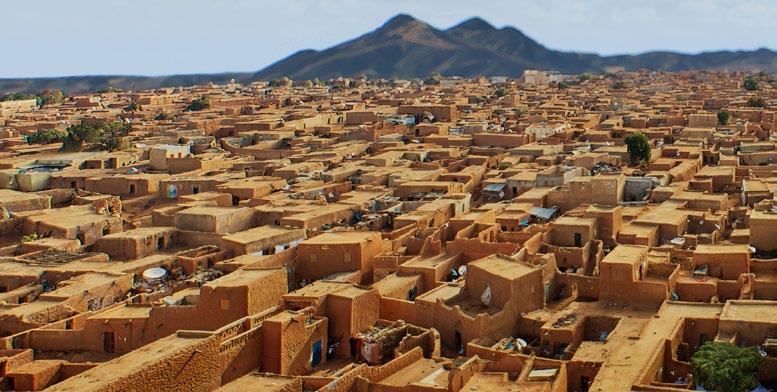

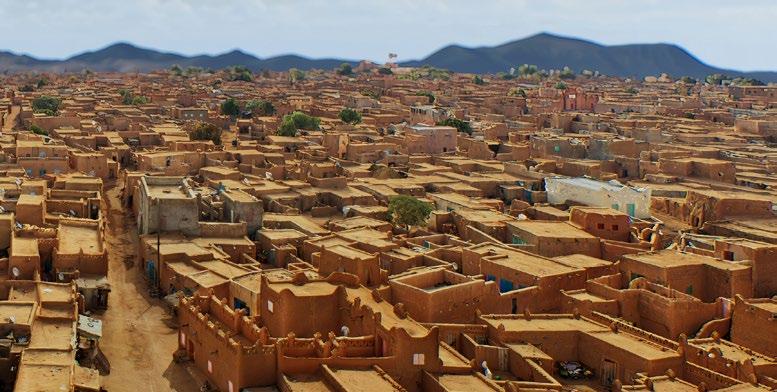
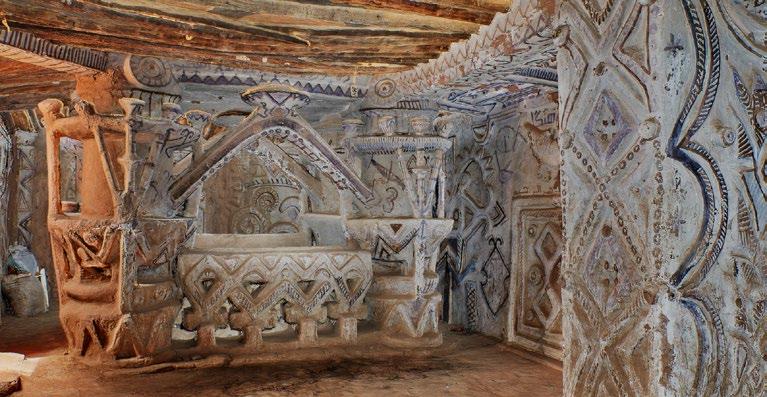

ALIPH
the
Below is a list of those whose projects are presented in the exhibition.
Afghanistan
Revitalization of Afghanistan’s Endangered
Intangible Heritage: Decorative Tile Making, Carpet Weaving and Tanbur Making, Herat, Bamiyan and Kabul
Turquoise Mountain
Conservation of a Buddhist Stupa, Shewaki
Afghan Cultural Heritage Consulting Organization (ACHCO)
Archaeology and Conservation of the Bala Hissar Citadel, Kabul
Aga Khan Trust for Culture – Afghanistan (AKTC)
Emergency Consolidation and Stabilization of the Musalla Complex’s 5th Minaret, Herat
Aga Khan Trust for Culture – Afghanistan (AKTC)
Armenia
Armenian Heritage Scanning Project
TUMO and Iconem
Bangladesh
Rapid Emergency Documentation Program for UNESCO World Heritage, Bagerhat and Paharpur
CyArk
Cambodia
Restoration of the Dancing Shiva of Koh Ker École française d’Extrême-Orient (EFEO), in collaboration with the National Authority for Preah Vihear and the National Museum of Cambodia
Restoration of the Western Mebon Temple, Angkor
Institut français du Cambodge, and Artisans
Angkor
Colombia
Emergency Support to the Museo del Vidrio de Bogotá during the COVID-19 pandemic
Corporación Cultural Museo del Vidrio de Bogotá
Côte d’Ivoire
In-situ Protection of the Collections of the Musée des Civilisations de Côte d’Ivoire, Abidjan
Fondation Tapa
Cyprus
Conservation of the Tuzla Mosque and St. George of the Latins Church, Larnaca and Famagusta
United Nations Development Programme (UNDP) Cyprus Office, in collaboration with the Technical Committee on Cultural Heritage (TCCH) in Cyprus
Ethiopia
Urgent Preservation of the Lalibela Churches
Embassy of France in Ethiopia and to the African Union, in collaboration with the Centre national de la recherche scientifique (CNRS) and the Ethiopian Authority for Research and Conservation of Cultural Heritage (ARCCH)
Georgia
Eco-Towerism in Tsiskarauli: Community Rehabilitation of a Missile-Struck Tower International National Trusts Organisation, in collaboration with the National Trust of Georgia and REMPART
Iraq
Rehabilitation of the Monastery of Mar Behnam
Fraternité en Irak, in collaboration with the Syriac Catholic Archdiocese of Mosul and the State Board of Antiquities and Heritage (SBAH)
Rehabilitation of the Mosul Museum
Musée du Louvre, Smithsonian Institution, World Monuments Fund, in collaboration with the Mosul Museum and the State Board of Antiquities and Heritage (SBAH)
Restoration of the Chaldean Al-Tahira Church, Mosul
Œuvre d’Orient, in collaboration with the Mosul Museum, the State Board of Antiquities and Heritage (SBAH), the Chaldean Archbishop of Mosul, and the Institut national du patrimoine (INP, France)
Rehabilitation of the Tutunji House, Mosul University of Pennsylvania, in collaboration with Mosul University and the State Board of Antiquities and Heritage (SBAH)
Restoration of Al-Masfi Mosque, Mosul La Guilde Européenne du Raid, in cooperation with the Iraqi State Board of Antiquities and Heritage (SBAH), the Sunni Waqf, the Institut national du patrimoine (INP, France) and École de Chaillot
First Aid Interventions to the World Heritage Site of Hatra
Associazione Internazionale di Studi sul Mediterraneo e l’Oriente (ISMEO), in collaboration with the State Board of Antiquities and Heritage (SBAH)
Reconstruction of the Yazidi Mam Rashan Shrine, Sinjar World Monuments Fund, in collaboration with the Eyzidi Organization for Documentation (EOD)
Revitalization of the Bahzani Olive Grove for the Yazidi Community, Baashiqa-Bahzani Lalesh Cultural and Social Center, and the NGO Mesopotamia
Restoration of Two Yazidi Temples, Sinjar Nadia’s Initiative, in collaboration with the NGO Nabo
Emergency Protection of the Arch of Ctesiphon
University of Pennsylvania, in collaboration with Iconem, Consultancy for Conservation, and the State Board of Antiquities and Heritage (SBAH)
Preservation of Intangible Heritage in Northern Iraq: Embroidery, Baptism, and Songs Abraham Path Initiative
Lebanon
Conservation of the Frescoes of St. Anthony’s Church, Deddeh Œuvre d’Orient, in collaboration with the Directorate General of Antiquities (DGA)
Rehabilitation of the Beirut National Museum Musée du Louvre, in collaboration with the Directorate General of Antiquities (DGA)
Urgent Stabilization of Historical Houses in Old Beirut
Institut Français au Proche-Orient (IFPO), National Heritage Foundation (FNP) for the Beirut Heritage Initiative (BHI) campaign and École Supérieure des Affaires (ESA), in collaboration with the Directorate General of Antiquities (DGA)
Rehabilitation of the Oriental Library of Université Saint-Joseph, Beirut Œuvre d’Orient, in collaboration with Université Saint-Joseph and the Directorate General of Antiquities (DGA)
Conservation of Glass Artifacts at the Archaeological Museum of the American University of Beirut (AUB) Institut national du patrimoine (INP, France) and the American University of Beirut (AUB), in collaboration with the Directorate General of Antiquities (DGA)
Urgent Stabilization of the Sursock Museum, Beirut
National Heritage Foundation (FNP) for the Beirut Heritage Initiative (BHI) campaign and École supérieure des affaires (ESA), in collaboration with the Directorate General of Antiquities (DGA)
Rehabilitation of the Al Makassed Villa, Beirut Institut Européen de Coopération et de Développement (IECD), in collaboration with the Directorate General of Antiquities (DGA)
Libya
Restoration of a Historical House in Ghadames (MaLiCH)
King’s College London, in collaboration with the Department of Antiquities (DoA) and the Ghadames City Promotion and Development Authority (GCPDA)
Documentation and Conservation of the Jebel Nafusa Heritage
Durham University, in collaboration with the Department of Antiquities (DoA), the National Heritage Institute of Tunisia, and the University of Tarhuna
Impact of Flooding on Libyan Coastal Heritage, Derna
Iconem, in collaboration with the Department of Antiquities (DoA) and the French Archaeological Mission in Libya (MAFL)
Cyrene and Apollonia Emergency Works
Centro di Ateneo di Archeometria e Microanalisi (CAAM) – Università degli Studi
« G. d’Annunzio », in collaboration with the Department of Antiquities (DoA)
Mali
Rehabilitation of the Tomb of Askia, Gao Ministère de l’Artisanat, de la Culture, de l’Industrie Hôtelière et du Tourisme (Direction Nationale du Patrimoine Culturel) and CRAterre
Reconstruction and Rehabilitation of the Built Heritage of Bandiagara
UNESCO, in collaboration with the Ministère de l’Artisanat, de la Culture, de l’Industrie Hôtelière et du Tourisme (Direction Nationale du Patrimoine Culturel) and the Cultural Mission of Bandiagara
Preserving Manuscripts in the Al-Aqib Library, Sankoré Mosque, Timbuktu
AMALIA
Preservation of Manuscripts at the Djenné Library
AMALIA
Niger
Documentation and Restoration of the Old City of Agadez
Imane-Atarikh, in collaboration with the Planning Committee of the Old City of Agadez, and Iconem
Palestine
Rehabilitation of Ali Salem Mansion, Beitillu (West Bank)
RIWAQ
Textile Conservation at the Palestinian Museum, Birzeit (West Bank)
The Palestinian Museum (Birzeit) and the Victoria and Albert Museum (London)
Senegal
Emergency Measures at the Musée de la mer, Gorée
Institut fondamental d’Afrique noire (IFAN)
Sudan
Rehabilitation of the Old Mosque in Old Dongola, Baraka
Polish Centre of Mediterranean Archaeology, University of Warsaw (PCMA-UW), in collaboration with the National Corporation for Antiquities and Museums (NCAM)
Urgent Protection of Meroe in the Face of Flooding
French Section of the Sudanese Directorate of Antiquities (SFDAS), in collaboration with the National Corporation of Antiquities and Museums (NCAM)
Syria
The Digital Reconstruction of the Baalshamin Temple, Palmyra
Paul Collart Association in the Middle East and University of Lausanne
Rehabilitation of the Museum of Raqqa and Conservation of its Collection
La Guilde Européenne du Raid, in collaboration with the NGO Roya, IMPACT, and Raqqa Civil Council
Stabilization and Preparation for the Conservation of Monuments of the Old City of Aleppo Aga Khan Trust for Culture (AKTC)
Emergency Restoration of Crac des Chevaliers Following the Earthquake, Al Husn Hungary Helps Agency, in collaboration with the St. Ephrem Patriarchal Development Committee (EPDC)
Yemen
Digitization and Assessment of Endangered Traditional Urban Centers Centre français de recherche de la péninsule arabique (CEFREPA) and Iconem, in collaboration with the General Organisation for the Preservation of the Historic Cities of Yemen (GOPHCY) and the General Organization for Antiquities and Museums
(GOAM)
Emergency Restoration Program for Damaged Buildings in the Old Walled City of Shibam Arab Regional Centre for World Heritage (ARC-WH), in collaboration with the General Organisation for the Preservation of the Historic Cities of Yemen (GOPHCY)
Reconstruction of the Al-Badr Palace and Rehabilitation of the Taiz National Museum Complex
World Monuments Fund, in collaboration with the General Organization for Antiquities and Museums (GOAM)
Emergency Support for the Yemeni Manuscripts House (Sana’a) during the COVID-19 pandemic
Sanid Organization for Relief and Development (SORD), in collaboration with the Yemeni Manuscripts House and the Ministry of Culture
Recovery and Conservation of Religious Monuments in the Old City of Sana’a Monumenta Orientalia, in collaboration with the Social Fund for Development (SFD), Alawqaf, the General Organisation for the Preservation of the Historic Cities of Yemen (GOPHCY) and the General Organization for Antiquities and Museums (GOAM)
Reconstruction and Rehabilitation of Al-Qu‘aiti Palace, Al-Qatin
Daw’an Foundation, in collaboration with the Governorate of Hadramout
Emergency Stabilization of the Old Mosque of Alha, Socotra
World Monuments Fund, in collaboration with the General Organization for Antiquities and Museums (GOAM)
Curators
Dr. Sandra Bialystok (ALIPH)
Dr. Bastien Varoutsikos (ALIPH)
Zhu Xiaoyun (NMC)
Scenography and immersive content
Iconem
President: Yves Ubelmann
Lead Architect and Scenographer: Ieva Bogušaitė
Architect: Martina Baraldi
Art Director: Issanou Kamardine Ousseni
Content production: Julie Lebastard
Project Lead: Etienne Tellier
Project Coordinator: Elina Thoumieux
NMC
Scenographer: Liu Zelong
Graphiste: Guo Yiran
Construction manager: Ren Shengli
Construction coordinator: Wang Peiran
Technical Equipment: Qin Dan, Meng Yan
Music composition: Christian Holl
Graphic design: Eyetalk Communications, Sabir
Motion design: Sylvain Morand
ALIPH
Executive Director: Valéry Freland
Director of Communications and Partnerships: Sandra Bialystok
Director of Strategy: Bastien Varoustikos
Communications Officer: Bates Assilbekova
Public Relations Officer: Sarah Hugounenq
Communications and Projects Intern: Emma Gulessian
We would like to thank all the members of the ALIPH Foundation Board, Governance Committees and the Secretariat for their ongoing support and their contributions to this exhibition.
National Museum of China
Museum Director: Gao Zheng
Curator: Zhu Xiaoyun
Curator’s assistant: Wang Yiming
Redaction: Wang Yiming, Gao Yuan
International coordination: Zhou Jing
Administration: Liu Zheng, Liu Zishuo
Communication: Duan Xu, Guo Yanyan
Education: Yang Zhi
Safety: Xin Di
Logistics: Guo Jing
Commercial products: Liu Yanan
ALIPH and the National Museum of China would like to thank:
Ministry of Culture and Tourism of China
The National Cultural Heritage Administration of China
French Embassy in Beijing
ALIPH would like to thank its:
Member States: France | United Arab Emirates | China | Saudi Arabia | Kuwait | Luxembourg | Morocco |
Cyprus
Private Donor Members:
Dr. Thomas S. Kaplan | J. Paul Getty Trust | Fondation Gandur pour l’Art
Host country: Switzerland
Non-Member Donors:
European Union | Oman | Romania | Principality of Monaco | Ministry of Culture of the United Arab Emirates | U.S. Ambassadors Fund for Cultural Preservation | Fondation TotalEnergies | Andrew W. Mellon Foundation
Partners who contributed to this exhibition:
Mohamed Alhassane, Imane-Atarikh (Niger)
Mohammed Al-Hashimie, Qaf Lab (Iraq)
Che Jing, OneEarth Lab (China)
Dr. Barbara Couturaud, Musée du Louvre (France)
Ajmal Maiwandi, Aga Khan Development Network (Afghanistan)
Sandrine Melki, Institut Européen de Coopération et de Développement (Lebanon)
New Material Technology Co.Ltd ((China)
Dr. Mu Jun, OneEarth Lab (China)
Dr. Nadine Panayot, Archaeological Museum of the American University of Beirut (Lebanon)
Dr. Francesca Recchia, Turquoise Mountain (Afghanistan)
Dr. Maria Luisa Russo, AMALIA (Italy)
Zhang Zhen, PollyPolymer (Suzhou)
This book was published on the occasion of the exhibition “Salvaged from the shadows, Protecting cultural heritage” held at the National Museum of Beijing, China, in Summer and Fall 2024.
National Museum of China
No. 16 East Chang’an Street, Dongcheng District, Beijing 100006 https://en.chnmuseum.cn/
International alliance for the protection of heritage in conflict areas ALIPH, Rue de Lausanne 80, 1202 – Geneva – Switzerland www.aliph-foundation.org
CATALOGUE
Under the direction of Valéry Freland (ALIPH)
Managing Editors: Sandra Bialystok (ALIPH), Bastien Varoutsikos (ALIPH), Sarah Hugounenq (ALIPH)
Editorial: Bates Assilbekova (ALIPH), Emma Gulessian (ALIPH)
Proofreading: Jeanine Beck
Design and image editing: EyeTalk Communications
All rights reserved: No part of this publication may be reproduced, stored in a retrieval system, or transmitted in any form, or by other means, electronic or otherwise, without the prior written permission of ALIPH.











